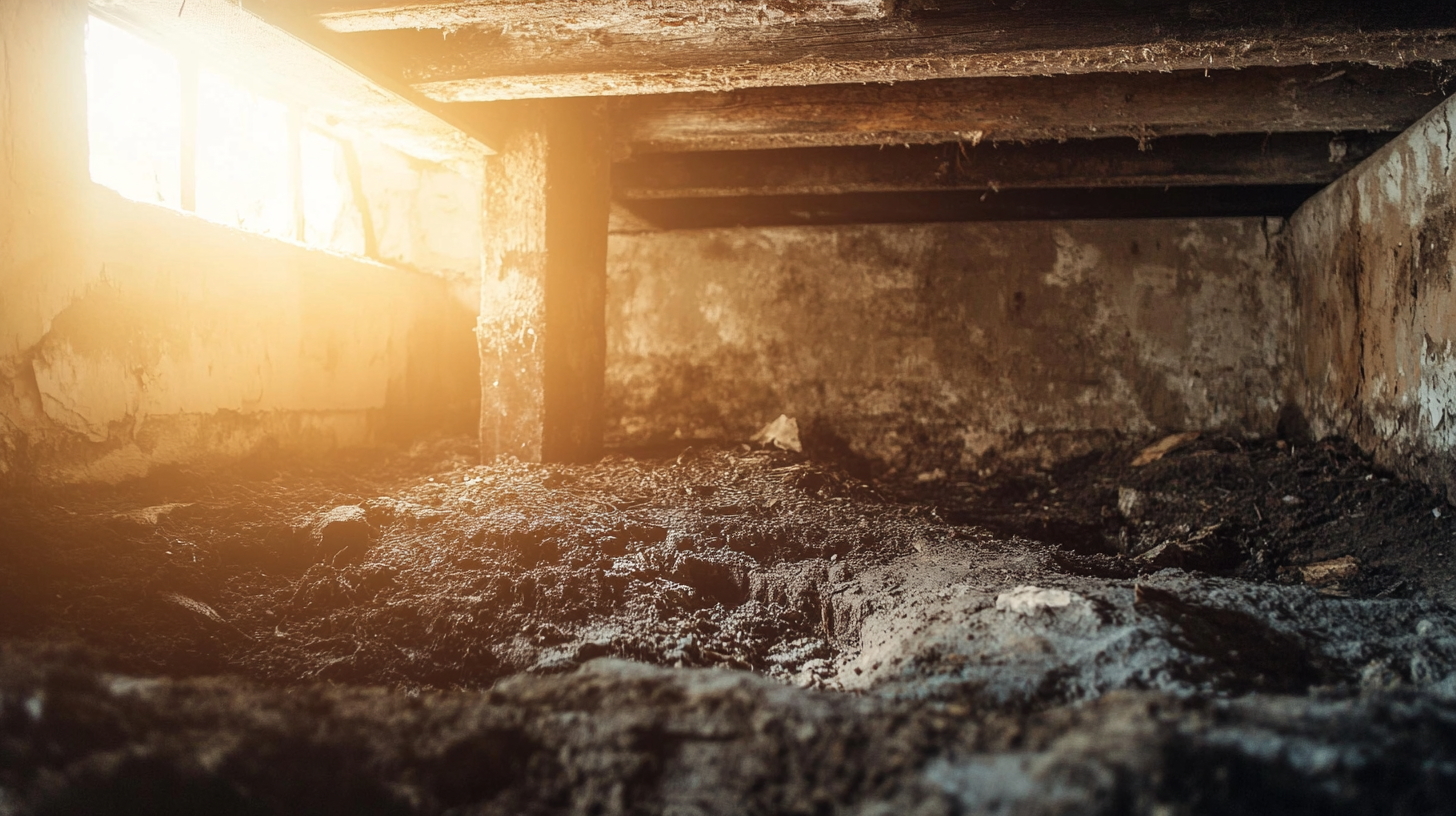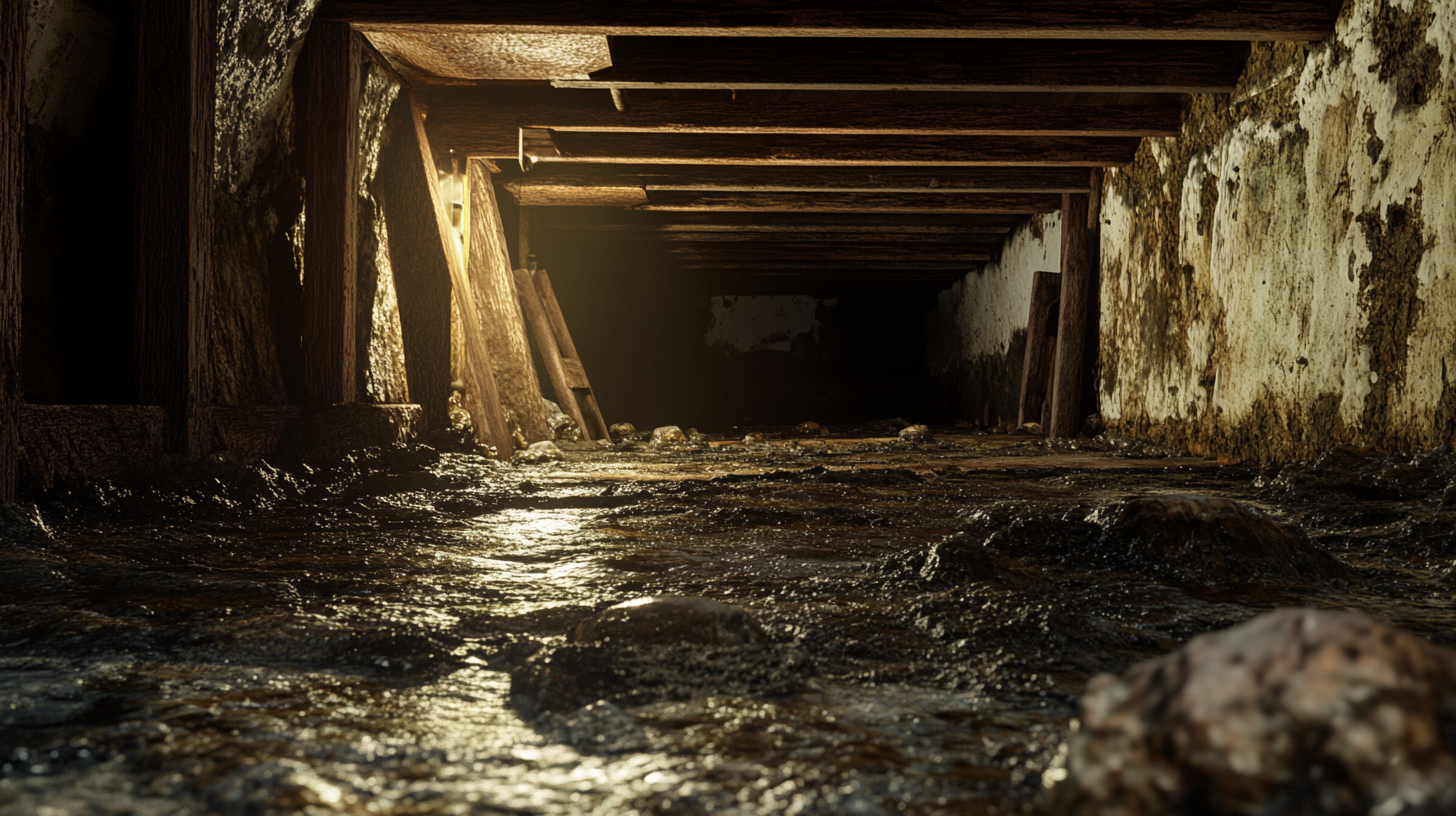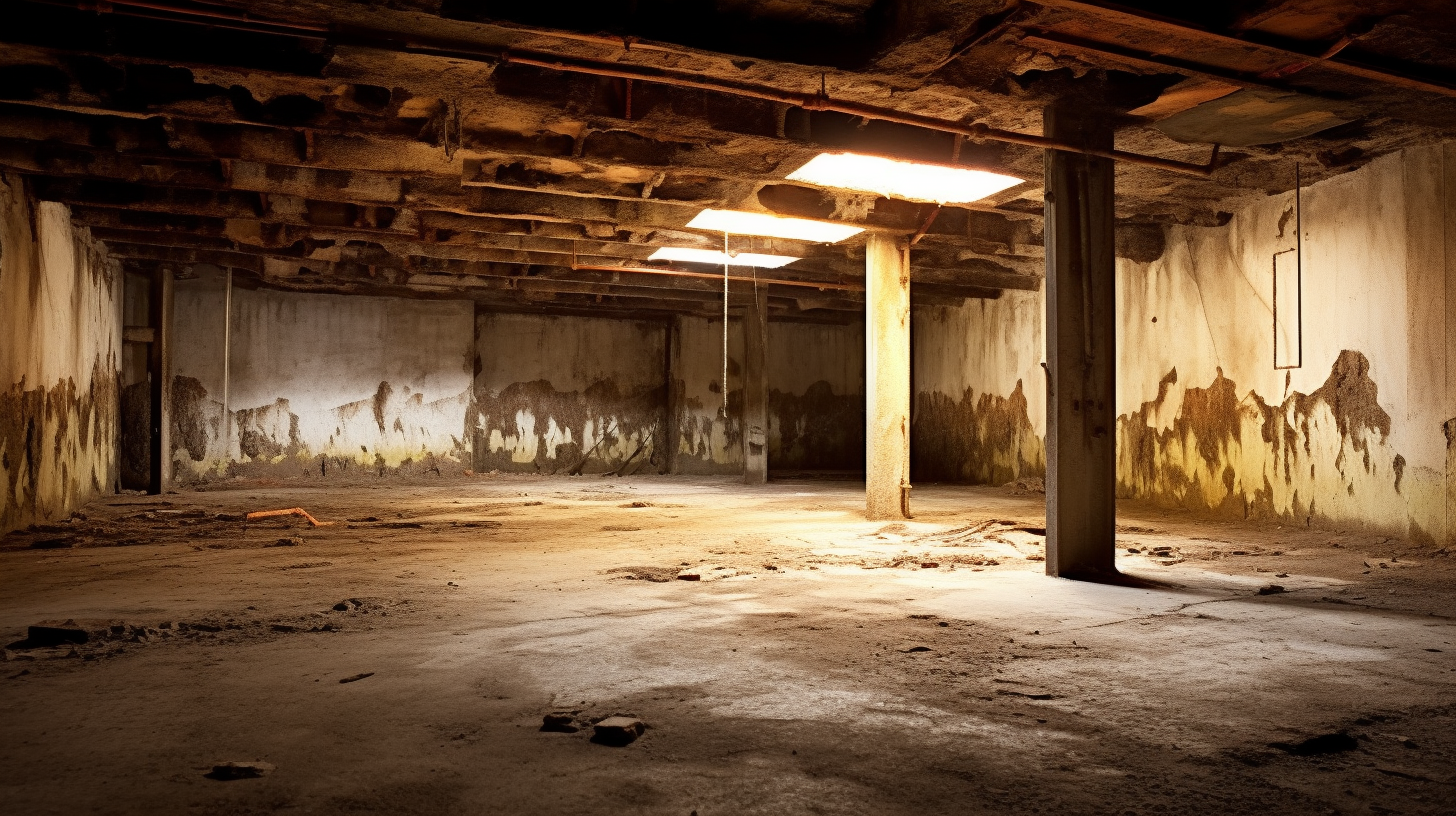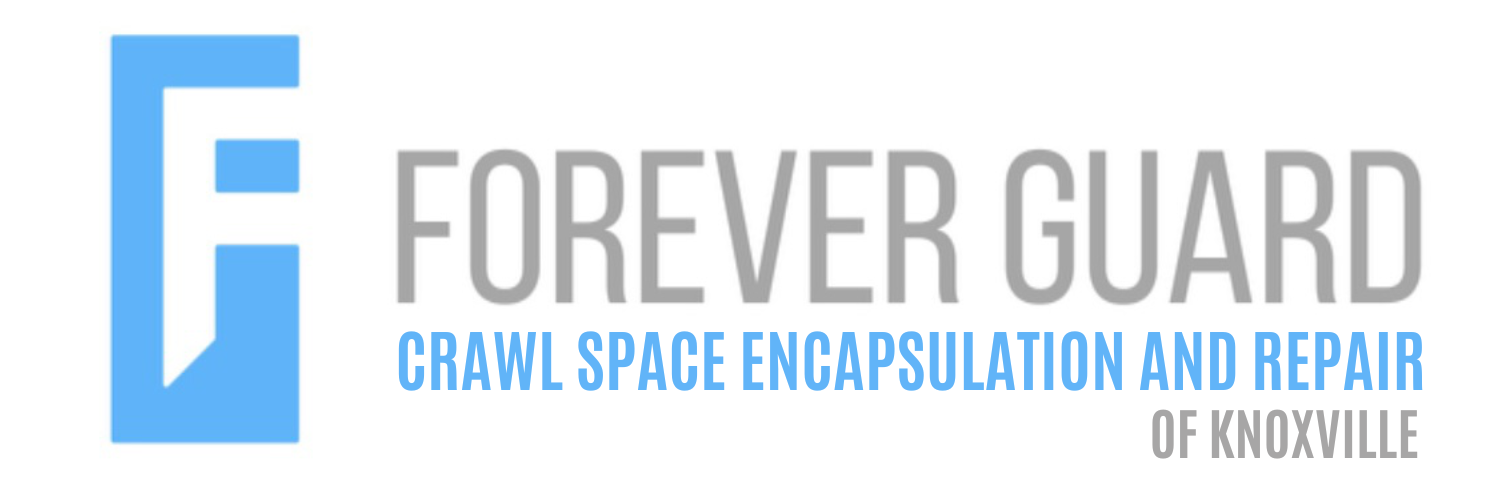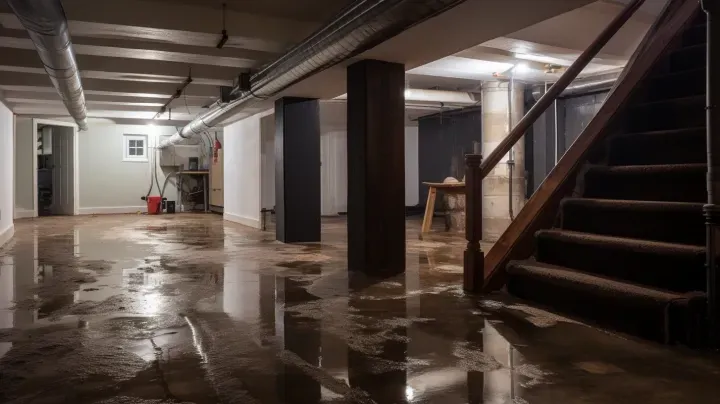Now IS THe Time To...

Crawl Space Services In Knoxville, TN
Stetson Howard: 865-432-6743
CRAWL SPACE ENCAPSULATION, REPAIR, WATERPROOFING & MOLD REMOVAL
No-Obligation, Free Inspections
No-Obligation Free Estimates
We Warranty All of Our Work
100% Satisfaction Guaranteed
Welcome to our insightful exploration of eco-friendly waterproofing, a crucial topic for homeowners and environmental enthusiasts alike. In this blog, we delve into the significance of adopting sustainable waterproofing methods that not only protect our homes but also contribute positively to the environment. The intersection of home maintenance and environmental responsibility has never been more pertinent, and through this discussion, we aim to shed light on how making eco-conscious choices in waterproofing can yield benefits that extend far beyond the confines of our homes.
Eco-friendly waterproofing is not just a trend; it's a necessary shift in how we approach the longevity and health of our living spaces. Traditional waterproofing methods, while effective, often involve the use of materials and chemicals that can be harmful to the environment. By turning to sustainable practices, we open the door to innovative solutions that safeguard our homes against moisture and water damage, while simultaneously reducing our ecological footprint.
In this blog, we will explore the various aspects of eco-friendly waterproofing, from the selection of materials to the application processes. We'll highlight how these sustainable practices not only benefit the environment by minimizing pollution and resource depletion but also offer homeowners long-term advantages such as improved indoor air quality, enhanced durability of the home structure, and potential cost savings.
Join us as we navigate the world of eco-friendly waterproofing, where each choice we make can contribute to a healthier, more sustainable future for our planet and a safer, more resilient home for ourselves.
The Basics of Eco-Friendly Waterproofing
Eco-friendly waterproofing represents a crucial step towards sustainable living, blending environmental responsibility with effective home maintenance. This approach to waterproofing is not just about keeping water out; it's about doing so in a way that respects and protects our environment.
What Makes Waterproofing Eco-Friendly?
Eco-friendly waterproofing is defined by its use of materials and methods that have minimal environmental impact. This includes the use of non-toxic, biodegradable, and recycled materials that are safe for both the environment and the occupants of the home. Key characteristics of eco-friendly waterproofing solutions include low volatile organic compound (VOC) emissions, high durability, and the ability to be recycled or safely decomposed at the end of their lifespan.
The benefits of using sustainable materials and methods in waterproofing are manifold. These eco-friendly solutions not only reduce the carbon footprint and environmental pollution but also often offer improved indoor air quality and can be better for the overall health of the residents. Additionally, sustainable waterproofing materials tend to be more durable, providing long-term cost savings and reducing the need for frequent replacements or repairs.
Environmental Impact of Traditional Waterproofing
Traditional waterproofing methods often involve the use of materials and chemicals that can be harmful to the environment. These substances can leach into the soil and water systems, causing pollution and harm to wildlife. The production of these materials also often requires significant energy and resources, contributing to carbon emissions and resource depletion.
The introduction of environmental concerns with conventional waterproofing methods has led to a growing awareness of the importance of shifting to greener alternatives. This shift is not just beneficial for the environment; it also aligns with a growing consumer demand for sustainable and responsible home improvement options. By choosing eco-friendly waterproofing methods, homeowners can play a part in reducing the negative environmental impact of home maintenance, while ensuring the longevity and health of their homes.
Sustainable Materials for Waterproofing
Embracing sustainable materials in waterproofing is a significant step toward eco-friendly home maintenance. These materials not only provide effective moisture protection but also align with environmental conservation efforts. Let's explore some of the natural, recycled, and upcycled materials that are making a positive impact in the realm of waterproofing.
Natural Waterproofing Materials
Natural materials have been used for waterproofing for centuries, offering a blend of traditional wisdom and environmental sustainability. Here are some commonly used natural materials in waterproofing:
Clay: Known for its excellent moisture-absorbing properties, clay is a popular natural waterproofing material. It is often used in the form of bentonite clay, which swells upon contact with water, creating an impermeable barrier.
- Advantages: Clay is non-toxic, highly effective, and has a minimal environmental impact.
- Limitations: Its application can be labor-intensive, and it may not be suitable for all structural conditions.
Lime: Lime has been used historically for waterproofing and offers natural antifungal and antibacterial properties.
- Advantages: It is breathable, allowing moisture to escape from structures, and is excellent for regulating humidity.
- Limitations: Lime can be caustic during application and requires careful handling.
Recycled and Upcycled Materials
The use of recycled and upcycled materials in waterproofing is a growing trend, promoting environmental sustainability and innovation.
Recycled Rubber: Recycled rubber, often from old tires, is processed and used in waterproofing membranes and coatings.
- Benefits: This approach not only recycles waste materials but also provides a durable, flexible waterproofing solution.
- Examples: Recycled rubber roof coatings and waterproof liners for ponds and landscaping.
Upcycled Plastic: Upcycled plastics are being transformed into waterproofing sheets and membranes.
- Benefits: This reduces plastic waste and offers a lightweight, effective waterproofing option.
- Examples: Upcycled plastic sheets used in green roofing systems and as liners for water features.
In conclusion, the use of sustainable materials in waterproofing not only contributes to the protection of structures but also plays a vital role in environmental conservation. By choosing natural, recycled, or upcycled materials, homeowners and builders can make a positive impact on the environment while ensuring the longevity and health of their properties.
Green Waterproofing Techniques
Green waterproofing techniques are revolutionizing how we protect our homes from water damage while being mindful of our environmental impact. These methods not only offer effective moisture barriers but also contribute to a healthier ecosystem. Let's explore some of the most innovative and eco-friendly waterproofing techniques available today.
Water-Based Sealants and Coatings
Moving away from traditional solvent-based products, water-based sealants and coatings are at the forefront of green waterproofing. These products are formulated to provide robust protection against moisture while minimizing environmental harm.
- Benefits: Water-based products are typically lower in volatile organic compounds (VOCs), making them safer for both the environment and indoor air quality. They are less odorous and toxic compared to solvent-based alternatives, and their cleanup process is more environmentally friendly, often requiring only water.
- Recommendations: When choosing eco-friendly brands, look for products with environmental certifications or those that list their ingredients transparently. Some recommended water-based products include acrylic sealants for sealing joints and elastomeric coatings for roofs, known for their flexibility and durability.
Green Roofing Systems
Green roofing systems, also known as living roofs, are a sustainable approach to waterproofing and insulating buildings.
- Explanation: These systems involve growing vegetation on rooftops, which helps absorb rainwater, provides insulation, and reduces urban heat islands. The waterproofing benefits include the roof's ability to manage and slow down stormwater runoff.
- Installation and Maintenance: Installing a green roof typically involves laying a waterproof membrane, a root barrier, a drainage layer, and soil, followed by planting suitable vegetation. Maintenance requirements vary but generally include regular watering, weeding, and inspections to ensure the integrity of the waterproofing layer.
Permeable Paving for Exterior Waterproofing
Permeable paving is an innovative solution for managing water runoff in outdoor areas, contributing significantly to sustainable water management.
- Role: This technique involves using porous materials for pavements, allowing water to percolate through and reduce runoff. It's particularly effective in mitigating the risk of water pooling around structures and overwhelming drainage systems.
- Types and Benefits: Common materials include porous asphalt, permeable concrete, and interlocking pavers. These materials help reduce surface runoff, lower the risk of flooding, and can even filter pollutants from the water. They are ideal for driveways, patios, and walkways where effective water management is essential.
DIY Eco-Friendly Waterproofing
Embracing DIY eco-friendly waterproofing projects is a great way for homeowners to protect their homes from moisture damage while being environmentally conscious. These green initiatives not only contribute to a healthier living environment but also align with sustainable living practices. Let's explore some simple DIY green waterproofing projects and the best practices for safety and preparation.
Simple DIY Green Waterproofing Projects
DIY waterproofing using sustainable methods can be both rewarding and effective. Here are some projects and tips for eco-friendly application:
- Rain Barrel Installation: Collecting rainwater is a simple yet effective way to manage water runoff. Installing a rain barrel at your downspout is a straightforward project that conserves water and reduces runoff.
- Applying Water-Based Sealants: For areas like basements or wooden decks, using water-based sealants can provide a durable and eco-friendly moisture barrier. Ensure the surface is clean and dry before application for the best results.
- Green Roofing for Small Structures: Implementing a green roof on structures like sheds or garages can be a manageable project. This involves creating a waterproof layer, adding drainage and soil, and planting suitable vegetation.
- Tips for Effective Application: Always follow the manufacturer's instructions for any eco-friendly waterproofing product. Ensure proper ventilation when working indoors and allow adequate drying time for the best results.
Safety and Preparation
While eco-friendly materials are generally safer, it's important to consider safety and proper preparation:
- Safety Considerations: Even with eco-friendly materials, it's crucial to wear appropriate protective gear, such as gloves and masks, especially when handling substances that could irritate the skin or respiratory system.
- Preparing Your Space: Before starting any waterproofing project, clean and clear the area. Remove any debris or old coatings, and repair cracks or damages to the surface. Ensure the area is dry before applying any waterproofing material.
- Testing Products: If you're using a product for the first time, do a small patch test to ensure it adheres well and provides the desired effect.
- Disposal of Materials: Properly dispose of any leftover materials or containers, following local regulations for eco-friendly waste management.
Professional Eco-Friendly Waterproofing Services
In the journey towards sustainable living, professional eco-friendly waterproofing services play a pivotal role. These services not only provide effective moisture protection for your home but also ensure that the methods and materials used are environmentally responsible. Let's explore how to find the right contractor and understand the cost implications of choosing eco-friendly waterproofing services.
Finding the Right Contractor
Choosing a contractor who specializes in eco-friendly waterproofing requires careful consideration. Here are some tips and questions to guide you:
- Research and Referrals: Start by researching contractors with a focus on sustainability. Look for referrals from friends or online reviews that mention eco-friendly practices.
- Certifications and Experience: Check if the contractor has certifications or training in green building practices. Experience in eco-friendly projects is a significant plus.
Questions to Ask:
- What eco-friendly waterproofing methods and materials do you use?
- Can you provide examples of previous sustainable waterproofing projects?
- How do your practices reduce environmental impact?
- Are your materials sourced sustainably and are they safe for indoor air quality?
These questions will help you gauge the contractor's commitment to sustainability and their ability to handle your waterproofing needs responsibly.
Cost Analysis
Understanding the cost implications of eco-friendly waterproofing compared to traditional methods is crucial for informed decision-making.
- Initial Costs: Eco-friendly waterproofing might have a higher initial cost due to the use of specialized materials and techniques. However, this is not always the case, and prices vary depending on the project's scope and materials used.
- Long-Term Benefits: Sustainable waterproofing often leads to long-term financial benefits. These include reduced energy costs due to better insulation properties, longer lifespan of materials reducing the need for frequent repairs, and potential increases in property value due to the use of green technologies.
- Comparative Analysis: When comparing costs, consider the durability and maintenance requirements of eco-friendly materials versus traditional options. Also, factor in the potential savings in energy bills and the environmental benefits that come with sustainable choices.
In conclusion, while the upfront cost of eco-friendly waterproofing services may be higher, the long-term financial and environmental benefits make it a worthwhile investment. By choosing a qualified contractor and understanding the cost dynamics, homeowners can contribute to a more sustainable future while ensuring their home is effectively protected from water damage.
FAQs
Recent Blog Posts
Crawl Space News
